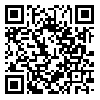Volume 13, Issue 6 (November & December 2022)
BCN 2022, 13(6): 765-776 |
Back to browse issues page
Download citation:
BibTeX | RIS | EndNote | Medlars | ProCite | Reference Manager | RefWorks
Send citation to:



BibTeX | RIS | EndNote | Medlars | ProCite | Reference Manager | RefWorks
Send citation to:
Ghandali R, Hassani-Abharian P, Sadeghi-Firoozabadi V, Nooripour R. The Effect of Violent and Melodrama Movies on Risky Decision-making and Behavioral Inhibition in Adolescents. BCN 2022; 13 (6) :765-776
URL: http://bcn.iums.ac.ir/article-1-1130-en.html
URL: http://bcn.iums.ac.ir/article-1-1130-en.html
1- Department of Cognitive Rehabilitation, Institute for Cognitive Science Studies, Tehran, Iran.
2- Department of Psychology, Faculty of Psychology and Education, Shahid Beheshti University, Tehran, Iran.
3- Department of Counseling, Faculty of Education and Psychology, Alzahra University, Tehran, Iran.
2- Department of Psychology, Faculty of Psychology and Education, Shahid Beheshti University, Tehran, Iran.
3- Department of Counseling, Faculty of Education and Psychology, Alzahra University, Tehran, Iran.
Abstract:
Introduction: Brain functional performance is a collection of outstanding mental processing that provides a framework for achieving goals based on targeted behaviors. Disorders in executive functions make it difficult for a person to perform everyday tasks. One of the phenomena highlighted in various media is the violence that adolescents welcome with the production of violent movies. This study aimed to investigate the effect of violent movies on risky decision-making and behavioral inhibition of adolescents and compare the effects of violence with melodrama movies
Methods: This quasi-experimental study was conducted with a pretest-posttest design with a control group among 60 adolescents (30 girls and 30 boys) living in Tehran City, Iran. They were selected using the available sampling method. For this purpose, neurological tests of Iowa Gambling and go-no go were used.
Results: The results showed that violent movies caused a significant increase in risky decision-making (P<0.05). In addition, these types of movies caused a significant decrease in behavioral inhibition among adolescents (P<0.05).
Conclusion: Movies with ill-mannered stories and content that glorify violence harm adolescents’ decision-making and deterrence, leading them to make risky decisions and weaken their inhibition power.
Methods: This quasi-experimental study was conducted with a pretest-posttest design with a control group among 60 adolescents (30 girls and 30 boys) living in Tehran City, Iran. They were selected using the available sampling method. For this purpose, neurological tests of Iowa Gambling and go-no go were used.
Results: The results showed that violent movies caused a significant increase in risky decision-making (P<0.05). In addition, these types of movies caused a significant decrease in behavioral inhibition among adolescents (P<0.05).
Conclusion: Movies with ill-mannered stories and content that glorify violence harm adolescents’ decision-making and deterrence, leading them to make risky decisions and weaken their inhibition power.
Type of Study: Original |
Subject:
Cognitive Neuroscience
Received: 2018/02/14 | Accepted: 2021/08/24 | Published: 2022/11/1
Received: 2018/02/14 | Accepted: 2021/08/24 | Published: 2022/11/1
Send email to the article author
| Rights and permissions | |
 |
This work is licensed under a Creative Commons Attribution-NonCommercial 4.0 International License. |








